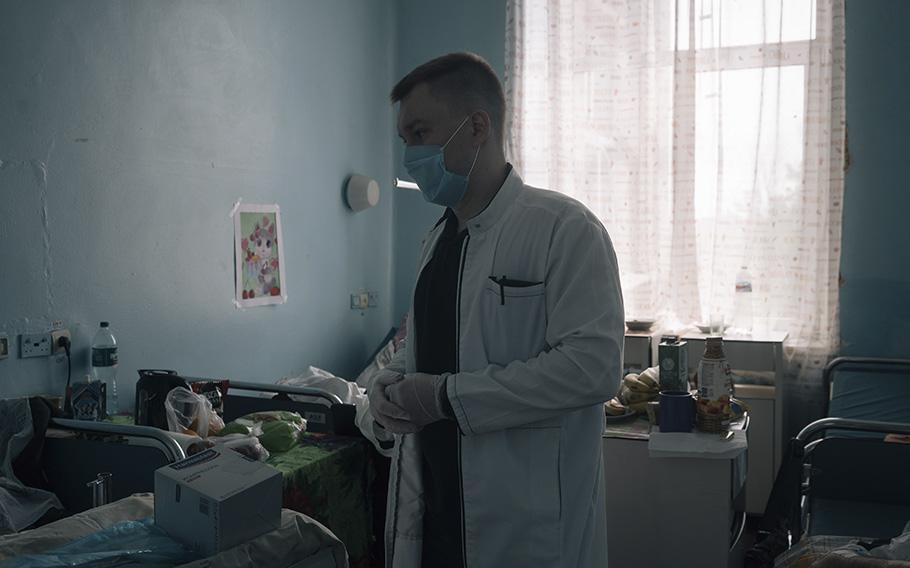Europe
Inside a Ukrainian military hospital, gruesome wounds and resilience
The Washington Post May 13, 2023

Vadym, a traumatologist, treats wounded soldiers at a hospital in Dnipro. (Alice Martins for The Washington Post)
DNIPRO, Ukraine — The doctor pushed open the hospital room's door, revealing four beds inside. In each one lay a Ukrainian soldier recently wounded on the front line of the nearly 15-month war with Russia.
Mykhailo, 34, lay on the first bed to the right. It was time to change his bandages. He turned to two visiting journalists, joking through the pain. "I put on nice underpants for you!" he said. Then he winced and grabbed the bar hanging above his head to steady himself.
"Shrapnel injuries of the lower limbs," explained Vadym, the traumatologist treating Mykhailo's many injuries. The Washington Post visited the hospital and interviewed patients and staff this month on the condition that they would not be identified with full names to maintain security and privacy.
Oksana, a nurse, removed the bloodstained bandages so she could replace them with fresh ones. "Come on, bunny," she told Mykhailo gently, "lift your leg."
"For me, these bandages are like a second wound," he said, still smiling. Humor, he said, helped him cope with the pain.
A wounded comrade, disturbed by Mykhailo's suffering, stepped out of the room.
Mykhailo had arrived at this hospital in central Ukraine three days earlier, after an attack on his front-line trench in the east. The quick work of military medics saved him from severe blood loss or amputation.
Doctors made long cuts in his legs to prevent swelling and to keep his limbs from getting gangrene - which could lead to amputation. He manages the pain in part by avoiding looking at the wounds when his bandages are changed. Looking, he said, makes it worse.
"The wounds are clean and beautiful," said Vadym, the doctor. "It will be possible to sew them up soon."
This patient was lucky. The team that evacuated him from the eastern front to Dnipro treated him on the way. That's not always the case, Vadym said - sometimes the medics who save soldiers under attack on the front do not have time to treat them.
The hospital is a few hours' drive from the bloodiest battles on the front line - meaning some patients arrive already stabilized; others show up near death.
Right now, Vadym said, the wounded arrive 24 hours a day - sometimes 100 in a single night - forcing the doctors to decide who needs urgent operations and who can wait until morning. Once the most severely wounded soldiers are treated, they're moved to hospitals further from the front to free up beds here for new arrivals.
Ukraine does not publish casualty counts. But conditions in hospitals near the front line can often signal how severe the situation is on the battlefield.
Other soldiers in the crowded hospital had similarly gruesome wounds. On one, the team used a magnet to help identify where shrapnel was lodged in his legs. One shard in his pelvis would cause more damage to remove than leave in, they said.
Another soldier received vacuum-assisted closure on his wounds to help heal them faster.
"What you just saw is easy," Oksana said. She has grown used to even more severe injuries, including amputations.
"No one likes it," Vadym said. "But we have to do it."